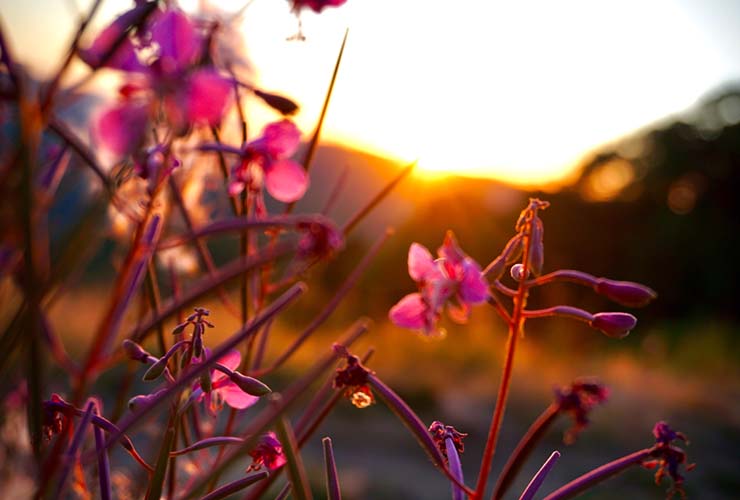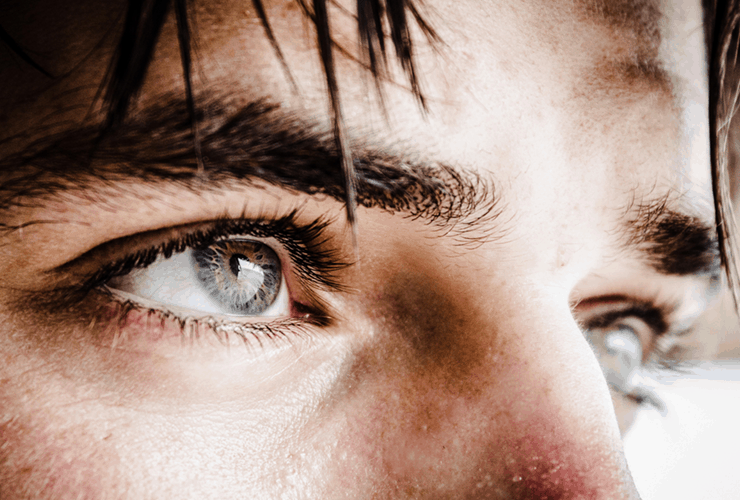Beautiful in Italian – How do I say it?
Being Italy a country rich in beauty and culture, many things can be described as beautiful… But how do I say Beautiful in Italian?
In this article, we’ll see how you can say it in various way… Let’s see them!
The most common word to say beautiful in Italian is “bello”.
Bello is one of the most used adjectives to say beautiful in Italian.
It describes people, animals and things that you consider pleasant to the eye, more than pretty or nice, very enjoyable and it translates directly with beautiful.
Here you will not only learn how to use the adjective bello, but also many ways to say beautiful in Italian, that will bring your vocabulary to the next level and step up your game!
Ways to say beautiful in Italian
- bello (bellissimo, molto bello)
- attraente
- affascinante
- delizioso
- incantevole
- stupendo
- fantastico
- magnifico
- splendido
- straordinario
- favoloso
- incredibile
- carino
- un capolavoro
- uno spettacolo
- spettacolare
Now that you have a list of the most common adjectives to say beautiful in Italian, let’s see how to use them correctly.
Bello
First of all, bello is is the most common way to say beautiful in Italian. It is an adjective: this means that it changes depending on the number(singular or plural) and gender(masculine or feminine) of the noun it refers to.
Take a look at this table:
| Singular | Plural | |
| Masculine | Bello/ bel /bell’ | Bei/ begli/belli |
| Feminine | Bella/bell’ | Belle |
Contrary to English, in Italian adjectives usually come after the noun.
- un ragazzo bello
- una donna bella
- i bambini belli
- le persone belle
Starting with the basis, we have bello, which is singular and masculine.
For example:
Un ragazzo bello – a beautiful boy
Sei proprio bello! – you are very handsome!
It may be used as a greeting between friends or family:
Ciao bello! – Hi handsome! or Hi bro!
Bello after a noun
Usually, in Italian, the adjective comes after the noun it refers to.
However, In the case of bello, it can come before or after a noun.
If placed before, depending on the noun, it slightly changes, to best accommodate the pronunciation and the sound of the phrase. It follows the same rule we use with definite articles, like so:
Bello
You use bello in front of a noun that starts with s + consonant, z, y, ps, pn, x or gn.
For example:
bello scenario – beautiful scenery
Bel
Bello becomes bel (singular masculine)
For example:
bel ragazzo, bel cane – a beautiful boy, a beautiful dog
Bell’
Bell’ is used in front of a singular noun starting with a vowel, whether it is masculine or feminine.
For example:
bell’artista – a beautiful artist

Bella
Bella is used with feminine singular nouns or as an informal way of greeting between female friends:
For example:
Una ragazza bella – a beautiful girl
Ciao bella! – Hi beautiful!
Bell’
When placed in front of a noun, it stays the same, except in front of words starting with a vowel, where it drops the final “a”:
For example:
Che bella giornata – what a beautiful day
Una bell’isola – a beautiful island
Belli
It generally accompanies masculine plural nouns. It can be heard amongst youngsters as a form of greeting, similar to “bros”:
For example:
dei ragazzi belli – some beautiful boys
Ehi belli! – Hi there bros!
Begli
Before a noun it changes, following the definite articles rule, becoming:
Begli in front of a noun that starts with s + consonant, z, y, ps, pn, x or gn.
For example:
begli scenari – beautiful sceneries
Bei
Bei (plural masculine) in all the other cases.
For example:
bei ragazzi, bei cani – some beautiful boys, some beautiful dogs
Belle
This is the feminine plural form of “bello”, it doesn’t change when placed in front of the noun it refers to:
For example:
Delle ragazze belle – some beautiful girls
Delle belle amiche – some beautiful friends
Più bello
Moving on, bello can be modified according to the degree of intensity: we saw its basic form, now we will deal with the comparative and superlative.
When comparing two things, situations or persons, and, in particular with the adjective, in Italian we use the formula:
“X è più bello di Y”, which literally translates into “X is more beautiful than Y”.
So, just by adding the particle “più”, you can build a comparative phrase. As you can see, this process works with all the normal adjectives, so keep it in mind, it could come in handy in other occasions!

Bellissimo and Molto bello
| Singular | Plural | |
| Masculine | Bellissimo | Bellissimi |
| Feminine | Bellissima | Bellissime |
Next, we can say very beautiful in Italian with the the superlative form of bello which is bellissimo: to construct the absolute superlative, you just need to add the suffix –issimo and you’re done! It translated into “very/extremely beautiful” in English. Of course, don’t forget that, being an adjective, it still needs to be adjusted to the noun that it accompanies:
È una canzone bellissima!
It’s a beautiful song
However, similar to bellissimo, we have molto bello, which expresses the same meaning by adding the adverb molto (very) in front of the adjective. Bear in mind that this formula must always follow the noun it refers to, contrary to what we said before about the use of bello and bellissimo.
For example:
Oggi è una giornata molto bella.
Oggi è una bella giornata.
These phrases both translate as “Today it is a beautiful day”, but, please, take note of the position of the adjective: can you see the difference? While bello can go either before or after the noun, molto bello can only follow it!
More ways to say Beautiful in Italian
As anticipated before, now we will see more ways to say beautiful in Italian. Remember that all these synonyms might have slightly different meanings and nuances between them, but they are generally used as substitutes of bello in different contexts.

Attraente
This usually refers to a person, meaning that he or she is not only aesthetically pleasing, but has to them a sensual allure. As a matter of fact, often you could hear the phrase:
“è molto bello, ma non è per niente attraente” – he/she is beautiful but not at all attractive
meaning that their beauty is somehow cold and distant.
Affascinante
It is similar to attraente, so it used to describe a good-looking person that also possesses quite the charm, a charismatic character.
For example:
Trovava il mago alquanto affascinante. – She thought the magician quite charming.
However, other adjectives that are frequently used to describe people (but also situations, things and places) are: delizioso, incantevole, meraviglioso and stupendo.
Delizioso and incantevole
They both denote a certain elegance and awe towards the addressee; they are usually referred to girls or women, their attire and appearance. Even an event or a situation can be described using these adjectives. Delizioso is often used referring to food.
For example:
Wow, quel vestito è delizioso su di te! – Wow, that dress looks stunning on you!
Che serata incantevole! – What a lovely night!
Questo dolce è delizioso! – This dessert is delicious!
Stupendo
I can’t help but sing this song in my head when I hear the word stupendo:
It is translated as gorgeous, wonderful, stupendous, marvelous, splendid.
For example:
Grazie per lo stupendo regalo! – Thank you so much for the wonderful gift!
Fantastico, magnifico, splendido and straordinario
These are often used in advertisement and TV language, to emphasize the products or concepts advertised even more. However, employed with the same hyperbolic function we have fantastico, magnifico, splendido and straordinario.
Here you will find some examples, to better understand how to use these adjectives:
In uscita il fantastico nuovo film di Gabriele Muccino. – Coming soon the new breathtaking movie by Gabriele Muccino.
La vista da quassù è meravigliosa. – The view from here is wonderful.
Visitate la magnifica Costiera Amalfitana! – Come visit the beautiful Amalfi Coast!
Non lasciatevi sfuggire questa offerta straordinaria! – Don’t miss out on this extraordinary offer!
Favoloso
This adjective comes from the word “favola”, which directly translates into “fairy-tale”, so when you refer to someone or something as favoloso, you’re actually saying that they are fabulous!
For example:
Adoro il tuo nuovo taglio di capelli, è favoloso! – I love your new haircut, it’s fabulous!
Incredibile
Similar to favoloso, there’s incredibile, which literally means “unbelievable”. In the context of beauty, it is used to say that something or someone it’s unbelievably, incredibly beautiful, gorgeous or amazing.
For example:
Lo spettacolo è stato incredibile! – The show was awesome!
Laura è incredibile! – Laura is amazing!

Carino
Carino is another term frequently used to indicate that something or someone is cute or nice, with a lesser degree of beauty compared to bello. However, it can also signify that someone is being kind to you or displaying some polite and gentle manners, which in Italian can be called “carinerie”.
For example:
A: Ti piace Marco? – Do you fancy Marco?
B: È carino, ma non è il mio tipo. – He is cute, but he’s not my type.
A: Che cane carino! – What a cute dog!
B: Si chiama Dug ed è un carlino. – It’s Dug and it’s a pug
Un capolavoro
You may find this expression referred to a piece of art, in general. It directly translates with “a masterpiece” and it is used with the same meaning, so when something, or someone, is just perfect and outstanding, it is a capolavoro!
For example:
Quel dipinto è un capolavoro! – That painting is a masterpiece!
Sei un capolavoro! – You are beautiful/handsome!
Uno spettacolo or spettacolare
If someone or something is very beautiful you can refer to it as uno spettacolo (”a show”), or describe it as spettacolare (spectacular).
For example:
Roma è spettacolare! – Rome is spectacular!
Con quel vestito sei uno spettacolo! – You look spectacular with that dress on!
Conclusion
As you can see, I used different variations of the word beautiful, according to the context. With time and practice, you will learn which adjective works best with which nouns, paying attention to the nuances that each one of them beholds.
You just leaned all valid alternatives to the word beautiful in Italian. I know, there is a lot to memorize, but little by little it will come natural and easier to use them. Practice makes perfect, so go out there and start making nice compliments to Italians!

